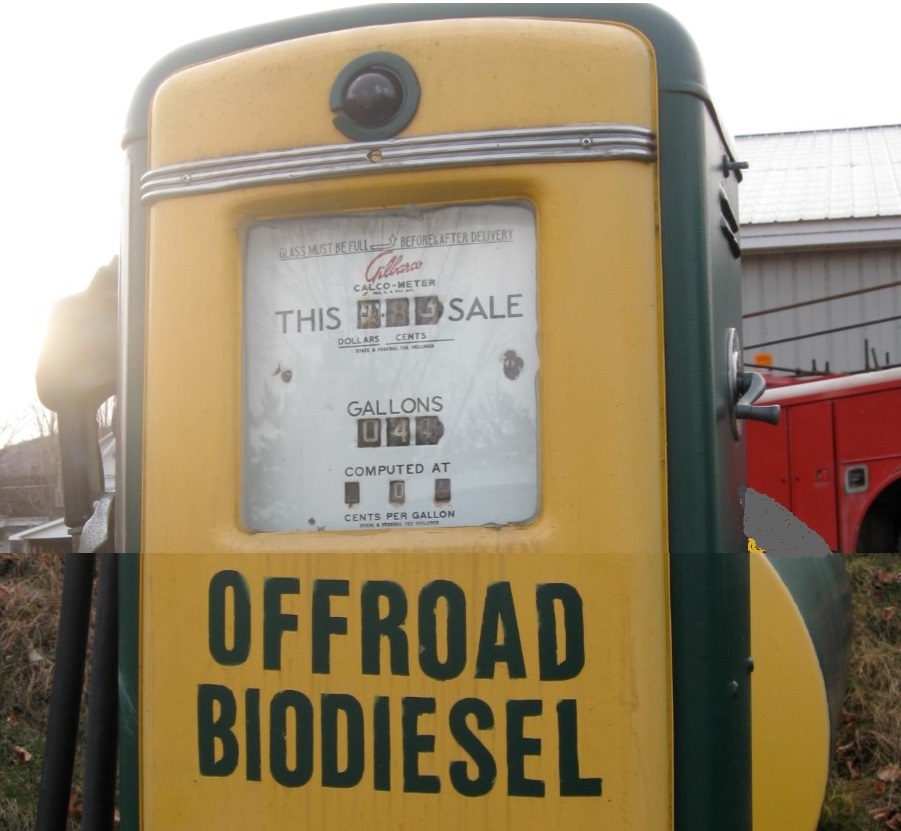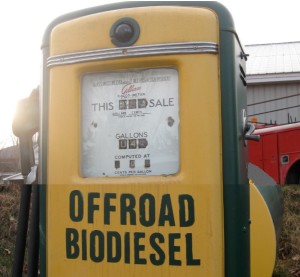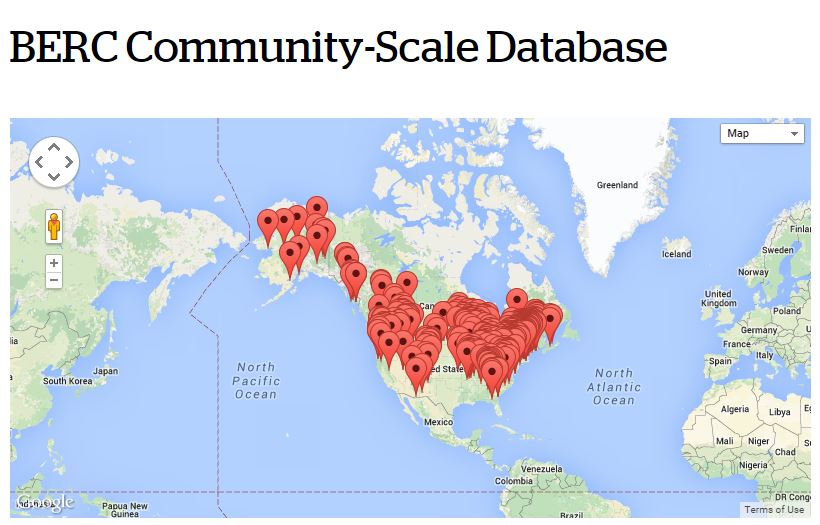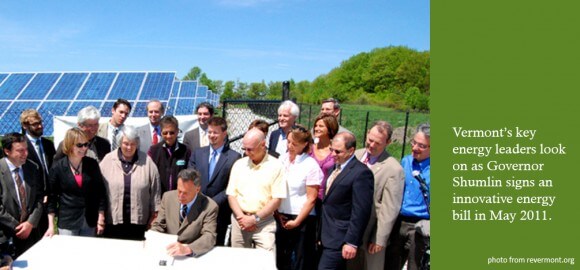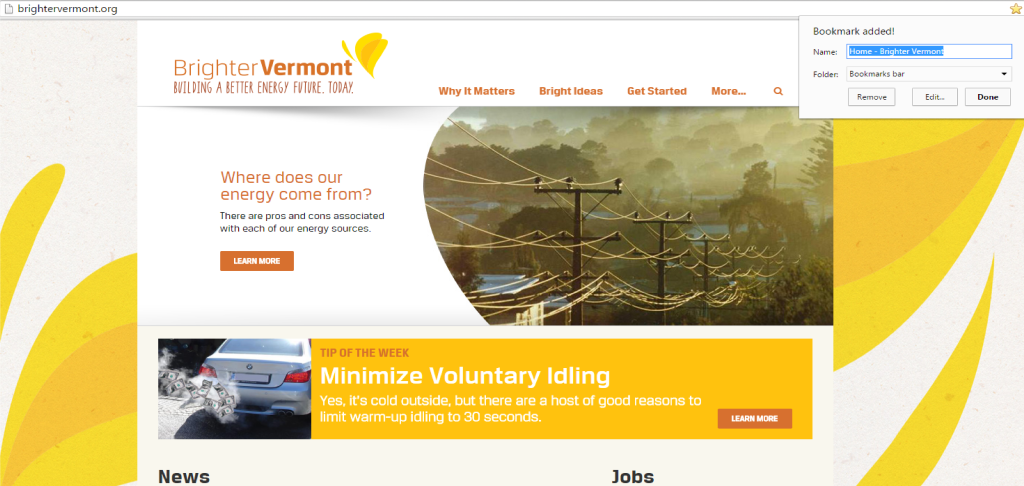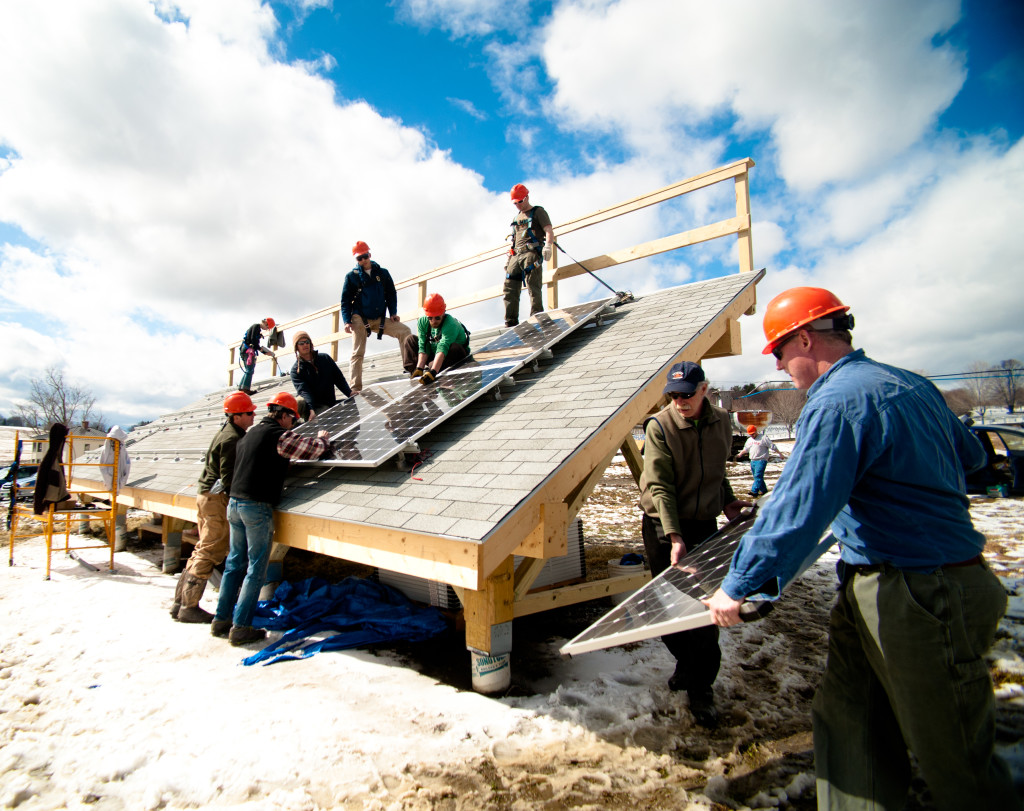01 Jun 2015
Food Versus Fuel – Local Production for Local Use – Biodiesel as Part of Sustainable Agriculture
Nationally, corn-based ethanol and palm oil based biodiesel are gaining negative attention for their impacts on the environment and food security. But here in Vermont, farms are producing on-farm biodiesel to power equipment and operations on the farm and the local farm community. This is a profoundly different model from national and international biofuel production. Agricultural Engineering and Agronomy Researchers at University of Vermont Extension in partnership with farmers and the Vermont Bioenergy Initiative have developed a model of local minded, on-farm production of biofuels that can help rural communities transition away from unsustainable models of food, feed and fuel production.
National and global models of corn-ethanol and soy oil-biodiesel production are resulting in large-scale land conversions in some parts of the world, in particular to a loss of native grass and forestland. This type of biofuel production is not happening in Vermont, where bioenergy production incorporates rotational oilseed crops like sunflowers and soybeans on Vermont farms.
Locally produced biodiesel supports resiliency in Vermont, a cold climate state which is particularly dependent on oil. Over $1 billion leaves the state for heating and transportation fuel costs. Heating and fuel independence by producing on-farm biodiesel provides farmers fuel security which is comparable to that which is sought by Vermont’s local food movement.
The local production for local use model results in two products from one crop: oil and meal (animal feed or fertilizer). By growing oilseed and pressing the seed to extract the oil, farms are creating a valuable livestock feed at home, rather than importing it. The oil can be sold as a food product, used directly in a converted engine or converted to biodiesel for use in a standard diesel engine. In this way, oilseed crops offer flexibility in the end-use of the products. US corn-based ethanol mandates are raising grain costs nationally, making feed expensive for Vermont farmers. Local bioenergy production means farmers produce their own feed, fuel, and fertilizer for on-farm use, at a fraction of the cost and more stable prices. Reduced and stable prices for feed, fuel, and fertilizer can mean improved economic viability for Vermont farms and more stable food prices for Vermont consumers in the future.
Overall viability can be seen in the local production for local use model by considering economics, energy and carbon emissions. Biodiesel production costs of between $0.60 and $2.52 per gallon have been estimated for farm-scale production models, which are generally below market price for diesel fuel. The net energy return in Vermont on-farm biodiesel operations has been estimated at between 2.6 and 5.9 times the invested energy (i.e. more energy out than was required to produce the fuel), demonstrating strong returns and potential for improvement with increased scale. Furthermore, oilseed-based production of biodiesel has been estimated to result in a net reduction of carbon dioxide emissions of up to 1420 lbs. per acre, the equivalent of about 1500 miles of car travel per year.
Categorizing the Vermont biofuel model with national models and trends is inaccurate, considering the innovative and efficient systems benefiting Vermont farmers. While national and international analysis weighs the benefits of food versus fuel, the model is quite unique in Vermont and the food versus fuel challenge is well met. The model developed in Vermont does however have wider-reaching implications in that this can be replicated in rural farm communities across the US.
As John Williamson of Stateline Farm, a Vermont Bioenergy grant recipient says, “100 years ago everyone produced their own fuel; we are just doing that now in a different way.”
19 May 2015
Mitigating Potential Biomass Feedstock Pests
The Vermont Bioenergy Initiative aims to connect diversified agriculture and local renewable energy production for on-farm and community use by supporting research, technical assistance, and infrastructure development in emerging areas of bioenergy including biodiesel production and distribution. As we move into the growing season, there are a variety of pests that can potentially affect sunflower, canola, and soybean biomass feedstock production. In this video a University of Vermont agronomist explains how to control theses potential biomass feedstock pests and increase crop, and eventually biofuel, yields without heavy reliance on pesticides and herbicides.
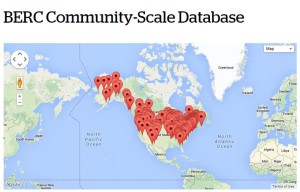 The Biomass Energy Resource Center (BERC), a program of the Vermont Energy Investment Corporation (VEIC), has launched a re-tooled web-based database for tracking the advancement of modern wood heating throughout North America. The newly revised searchable database houses key information on existing community-scale modern wood heating and combined heat and power systems across the U.S. and Canada, as well as an archive of links to case studies. Examples of community-scale facilities include schools, campuses, hospitals, prisons, multi-family or senior housing, government buildings, commercial buildings, and farms and greenhouses.
The Biomass Energy Resource Center (BERC), a program of the Vermont Energy Investment Corporation (VEIC), has launched a re-tooled web-based database for tracking the advancement of modern wood heating throughout North America. The newly revised searchable database houses key information on existing community-scale modern wood heating and combined heat and power systems across the U.S. and Canada, as well as an archive of links to case studies. Examples of community-scale facilities include schools, campuses, hospitals, prisons, multi-family or senior housing, government buildings, commercial buildings, and farms and greenhouses.
The database was originally created with funding from the U.S. Endowment for Forestry and Communities and further improvements were made with funding from the U.S. Department of Energy through the support of Vermont Senator Patrick Leahy. The re-tooled database is a user-friendly, interactive tool that will help collect and track information on a continuing basis. “This resource will provide stakeholders from a variety of backgrounds with a better understanding of the current demand for wood fuels as an energy source and the success of modern wood heating projects throughout North America,” said Adam Sherman, Manager of BERC at VEIC.
The database already contains more than 500 entries, but to ensure that this publicly available resource is accurate and up to date, BERC is asking for user participation. “We are committed to maintaining and building this database over time to ensure it remains a useful and reliable too, but this is a rapidly growing sector, so we need users to help,” said Sherman. “We need people to engage with the database; add new entries for facilities that have been missed and as new facilities come online, and edit existing entries that are incomplete.” With regular contributions, the database will continue to improve and grow.
With tens of thousands of annual visits and top Google search ranking, the BERC website is a high-visibility home for this important tool. The BERC database is designed to provide vital information on a specific subset of biomass energy facilities; community-scale biomass heating projects. The BERC database complements the Wood2Energy.org database that covers a broader spectrum of biomass energy facilities including power plants, sawmills, and pellet mills. Not only will the BERC database provide wood heating systems vendors the exposure and recognition for their projects, it also helps demonstrate that modern wood heating is becoming mainstream throughout North America. To learn more about using and contributing to the database visit www.biomasscenter.org/database.
About BERC
The Biomass Energy Resource Center (BERC) is a program of Vermont Energy Investment Corporation (VEIC). BERC works to advance the use of community-scale biomass energy throughout North America and beyond by providing technical consulting services, biomass energy program design and delivery, and education and outreach on benefits and best practices. BERC works with communities, federal, state and local governments, colleges and universities, businesses, utilities, and others to use local biomass resources, invest in local energy systems, and reduce the use of fossil heating fuels.
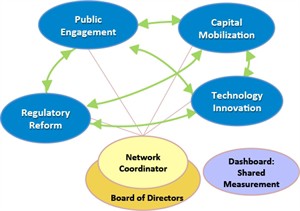
The EAN’s 4 Key Leverage Points of capital mobilization, public engagement, technology innovation, and regulatory reform
The Energy Action Network (EAN) is a community of a community of Green Mountain State stakeholders working to change the Vermont energy landscape “to end Vermont’s reliance on fossil fuels and to create clean, affordable energy and secure electric, heating, and transportation systems for the 21st century.” Their goals are consistent with the State of Vermont 2011 Comprehensive Energy Plan, which aims to meet 90% of Vermont’s energy needs through efficiency and renewable sources by 2050.
EAN has identified a series of pathways for Vermont for Vermont to accomplish the paradigm shift of 90% renewables by 2050. Membership is structured into working groups focused on four “leverage points” capital mobilization, public engagement, technology innovation, and regulatory reform. Current projects include alterations to Act 250, changes in zoning laws, programs to promote bringing rental properties into efficiency standards, and assessing current land use for its potential for bioenergy and solar projects.
One notable awareness vehicle, Brighter Vermont, encourages Vermonters to change the way common energy use and think more about where energy comes from. Read more about how Brighter Vermont helps change energy behavior. EAN also works with municipalities and recently helped Montpelier plan for a 15 year track to become the first state capital to accomplish all of its energy needs with renewable energy. On February 12, 2015 the Montpelier City council accepted and endorsed the plan to make Montpelier a “net zero” city.
Currently, EAN is working with the Vermont Sustainable Jobs Fund to expand the Vermont Energy Atlas website into the Community Energy Dashboard. The Dashboard will enable communities to understand their energy use and make clean energy choices and investments across all energy sectors—heating, transportation, and electricity. The Dashboard will make energy use visible and understandable to consumers and communities by showing town-level progress toward Vermont’s 90% renewables by 2050 goal. The Dashboard will also shows existing and potential renewable energy sites (solar, wind, hydro, biomass). We will provide updates as they develop. Stay tuned into the Vermont Bioenergy Field Notes blog and visit the Energy Action Network website to learn more.
20 Apr 2015
Getting Smart About Vermont Energy
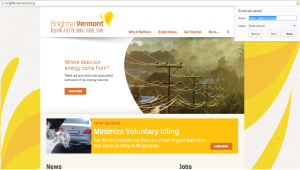 The State of Vermont 2011 Comprehensive Energy Plan calls for 90% of Vermont energy needs to be met through efficiency and renewable sources by 2050. As Vermont residents witness continued high numbers in clean energy jobs, and advanced renewable energy legislation they will also need to take responsibility for Vermont to meet these goals, as every Vermonter will need to contribute in some way for Vermont to meet this ambitious goal. Enter Brighter Vermont, an action oriented program of the Energy Action Network, to help everyday Vermonters rethink where their energy comes from, how they use it in their daily lives, and what they can do to help the state reach its 90% by 2050 goal.
The State of Vermont 2011 Comprehensive Energy Plan calls for 90% of Vermont energy needs to be met through efficiency and renewable sources by 2050. As Vermont residents witness continued high numbers in clean energy jobs, and advanced renewable energy legislation they will also need to take responsibility for Vermont to meet these goals, as every Vermonter will need to contribute in some way for Vermont to meet this ambitious goal. Enter Brighter Vermont, an action oriented program of the Energy Action Network, to help everyday Vermonters rethink where their energy comes from, how they use it in their daily lives, and what they can do to help the state reach its 90% by 2050 goal.
The Brighter Vermont website is packed with testimonials and videos shared by individuals who describe the financial decisions they are making to positively affect the environment, Vermont’s economy, and their wallets. A family in Rutland reports on small home improvement they have made to keep out the Northeast cold out and share a video about lowering energy costs, with the help of Green Mountain Power, by properly weatherizing their home, changing to energy efficient LED bulbs, electing for a heat pump, and adding solar panels. The overall transition has made them a more energy conscious family and was achievable with a ten year loan the family is pleased to see being offset by reduction in energy costs.
A family in Burlington’s journey towards reducing their carbon footprint is documented in a fun testimonial video where the family picks out their first electric vehicle. They were able to replace one of their family vehicles with a zero emission Nissan Leaf (hyperlink to video) that was available with an affordable two year lease. The switch from a classic Vermont staple vehicle, a Subaru, to the Leaf, has helped the family not only save money at the gas pump, but the, as the family reports, electricity used to charge the vehicle comes from renewable energy. They enjoy educating their friends and neighbors about this carbon footprint transition.
Brighter Vermont also hosts ways for businesses, schools, and towns to become more efficient and promote renewables in their community. Methods for how schools and businesses have become more efficient by transitioning to modern wood heating. A featured video produced by VEIC (hyperlink) features 54 schools from across Vermont currently heating with wood chips and pellets which provides heat for nearly one third of k-12 students across Vermont. Our own Vermont Bioenergy Initiative Vermont on-farm energy videos are also featured for farmers to learn more about the emerging areas of oilseed, grass, and algae biofuel.
There is much that needs to be done in the fight against climate change and moving Vermont away from its reliance on fossil fuels. While this road can be daunting, it is important to remember that we can all make small changes that will benefit us, our community, and our state. And the Brighter Vermont website provides a fun and interactive platform for individuals, families, businesses, and institutions to learn how to contribute and share these efforts with others so Vermont can take steps towards meeting our renewable energy goals for our future.
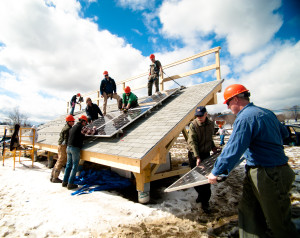 Vermont Technical College is committed to educating students as the workforce to support renewable energy systems and infrastructure development in Vermont. A number of technical “green trainings” are being offered in the coming months ranging from solar PV, solar hot water, waste water, OSHA standards, and wetland delineation.
Vermont Technical College is committed to educating students as the workforce to support renewable energy systems and infrastructure development in Vermont. A number of technical “green trainings” are being offered in the coming months ranging from solar PV, solar hot water, waste water, OSHA standards, and wetland delineation.
Vermont Tech is offering introductory and advanced classes that serve as a great opportunity for individuals to enter the growing field of solar installation and for the existing workforce to advance their skill set. By successfully passing the NABCEP Entry Level exam, students at an introductory level will demonstrate the basic knowledge necessary to apply the fundamental application principles, design installation, and operation of grid-tied and stand-alone PV Systems. Renewable Energy Vermont (REV) recently approved this 40-hour training to qualify any individual for Provisional Partnership, regardless of their status of an electrical license.
For the more advanced PV installer, an upcoming one day course on April 15th will provide continuing education for the Electrical S license in solar technology. Taught by Dan Kiney, in compliance with the Vermont State Electrical Board, this class has been approved by the VT State Electrical Board for 8 S License Continuing Education Hours.
The 16 hour Introduction to Solar Hot Water being held May 2-3 has been approved for licensed plumbers by REV for Provisional Solar Hot Water Partnership and only requires a basic knowledge of electrical systems.
Additionally, a BPI Dual Certificate Training scheduled for June 1-5 will focus on the building sciences related to physics and control strategies for air, heat, and moisture and will prepare students to test for their Building Analyst and Envelope Professional Certifications.
Learn more about these and other Vermont Tech Continuing Education & Workforce Development Green Trainings.
16 Feb 2015
Upcoming Farm Energy IQ Training

It’s not too late to register for the upcoming Farm Energy IQ Training for New England Agricultural Service Providers. This training will take place starting Monday, February 23rd at 8:00 a.m. and will end Wednesday February 25 in Fairlee, Vermont. Organized by individuals from the University of Vermont Extension Service, Penn State, and Rutgers University, this three day training is a great opportunity for those interested in on farm energy to learn and apply their skills as well as network with other attendees. The Farm IQ Energy Training is funded generously by Northeast Sustainable Agriculture Research and Education (SARE) Program as part of a regional professional development program to bring the latest developments in the field to individuals who can best apply them.
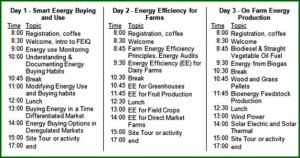
This conference will provide a range of opportunities to learn or improve energy purchasing, calculating, conservation, production, and analysis.Attendees will even have the opportunity to apply skills via hands-on activities and by visiting local operations. Over the three days these lessons will be compared for application on farms in different settings. In addition, attendees will receive a comprehensive binder with all the material covered in the workshops as well as supplemental materials to refresh and share material as well as continue learning.
This conference is a great opportunity to solidify one’s knowledge by learning from on hand specialist and being immersed with in the material. If you happen to miss this particular training, the same workshop will be offered in Pennsylvania, March 10th to the 12th and again in New Jersey from April 8th to the 10th.
Read more about renewable energy events around the country on the Vermont Bioenergy Field Notes blog
- February
- Biomass Boot Camp, February 23, Catonsville, MD
- Farm Energy IQ – Training for NE Ag Service Providers in VT February 23- 25, Fairlee, VT
- ACI’s 4th Carbon Dioxide Utilization Conference 2015 February 25-26 San Antonio, TX
- 2015 Executive Leadership Conference. 25 February – 1 March 2015. Phoenix, Arizona
- March
- World Agri-Tech Investment Summit. March 3-4, 2015 San Francisco, CA
- Waste to Biogas and Clean Fuels Finance and Investment Summit. March 3-4 San Jose, CA
- Farm Energy IQ – Training for NE Ag Service Providers March 10-12, 2015 State College, PA
- Advanced Bioeconomy Leadership Conference March 11-15, 2015 Washington, DC
- Next-Generation Defense Energy Symposium. 17 – 18 March, 2015. Washington, United States
- WEBINAR: Using B100 in Our Class-8 Trucking Operations (60 trucks) in Tennessee March 19, 2015 10:00 AM ET
- ACI’s Annual Lignofuels Americas Summit March 25-26, 2015 Milwaukee, WI
- Forest Products and Timberland Investment Conference. March 31-April 1, 2015. New York, NY
- April
- Applying Renewable Energy – Online Training April 01, 2015 at 09:00 AM to June 30, 2015 at 06:00 PM
- Farm Energy IQ – Training for NE Ag Service Providers in NJ, April 8- 10, Bordentown, NJ
- 5th Defense Renewable Energy Summit. 7-8 April 2015. Arlington, VA
- Good Jobs, Green Jobs 2015 April 13 Washington, D.C
- 2015 Northeast Biomass Heating Expo. April 16-18, 2015. Portland, ME
- Introduction to Renewable Energy Technologies Start date: 20 to 22, 2015
- International Biomass Conference and Expo. 20 -22 April 2015. Minneapolis, MN
- 37th Symposium on Biotechnology for Fuels and Chemicals. April 27 – 30, 2015 San Diego, CA
Vermont is an indisputable leader in sustainable job growth and renewable energy, punching well above its weight in the fight against global climate change. It is because of opportunities like the upcoming summit, Creating Prosperity & Opportunity Confronting Climate Change, that local business, government, non-profit, and higher education leaders will come together to focus on advancement of sustainable job growth in fields that have a positive impact on the environment and local economy. Organizations including the Vermont Energy Investment Corporation, Renewable Energy Vermont, Green Mountain Power, University of Vermont, Energy Action Network, several government agencies, and multiple renewable energy businesses will converge at Vermont Technical College on Wednesday, February 18th for Vermont’s climate change summit sponsored by the Vermont Council on Rural Development. The day will commence with a keynote address from Vermont Governor Peter Shumlin who will speak about “Vermont as Climate Economy Leader.” The recently reelected Governor’s inaugural address, focused heavily on energy and the environment and the summit provides an opportunity for Vermonters concerned with regional climate change to learn more about his upcoming plan of action.
A “Climate Science Fishbowl” will follow, focusing on the effects regional and global climate change will have on Vermont’s future. Moderated by Mark Johnson, host of WDEV’s The Mark Johnson Show, the panel will feature Jon Erickson of Rubenstein School, UVM, Alan Betts of Atmospheric Research, and Gillian Galford of VT Climate Assessment, UVM. Two sets of breakout sessions round out the rest of the day; the first focusing on “climate economic policy” followed by “ideas for action” in the afternoon. Those interested in bioenergy might elect to attend breakout sessions such as “Advancing Community-Based Climate Action” moderated by Johanna Miller of VECAN and the VT Natural Resources Council or “Developing Ubiquitous Distributed Energy” moderated by Chuck Ross, Secretary of VT Agency of Agriculture, Food & Markets. Additionally, “Spurring Research and Development for New Technologies in Vermont” moderated by Ted Brady, USDA Rural Development seems to complement the Vermont Bioenergy Initiative’s work building the new frontiers in bioenergy for the State of Vermont. To register and for a complete schedule visit: http://vtrural.org/programs/climate-economy/summit.
08 May 2014
Vermont Bioenergy Initiative releases report on grass heating energy potential in Vermont and the Northeast
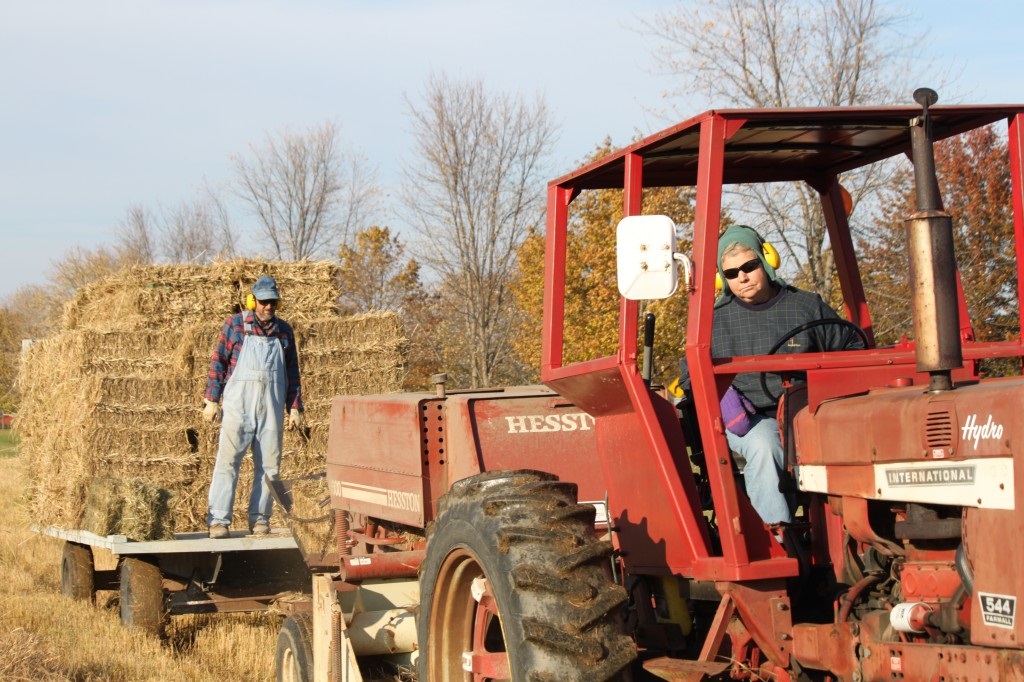
Baling switchgrass at Meach Cove Farm in Shelburne, Vermont. Photo Credit Vermont Bioenergy Initiative
Montpelier, VT – A new report evaluating grass biomass energy as a potential heating fuel has been released. Grass Energy in Vermont and the Northeast summarizes current research on the agronomy and usage potential of grass as a biofuel, and points to next steps for the region to fully commercialize this opportunity. The report was released last week by the Vermont Bioenergy Initiative, a program of the Vermont Sustainable Jobs Fund. The full report can be found on the Vermont Bioenergy Initiative website.
“There have been several independent assessments over the years of the various aspects of growing and burning grass for energy, but we were missing the step of linking it all together. We needed to put into one place what is currently known about grass energy, and get our remaining questions on paper,” says Sarah Galbraith, program manager of the Vermont Bioenergy Initiative. “It is very possible that grass as a heating fuel could enter into Vermont’s growing suite of renewable energy options. There are still uncertainties, but this report provides a series of recommendations and next steps for Vermont and the Northeast.”
The assessment for the report was conducted by members from Wilson Engineering Services and Ernst Conservation Seeds, and a former staff of Pennsylvania State University Cooperative Extension, who together conducted a literature review and interviews with experts in the field. The report was reviewed by the Vermont Agency of Agriculture, Food and Markets, University of Vermont Extension, Biomass Energy Resource Center, and the Vermont Sustainable Jobs Fund.
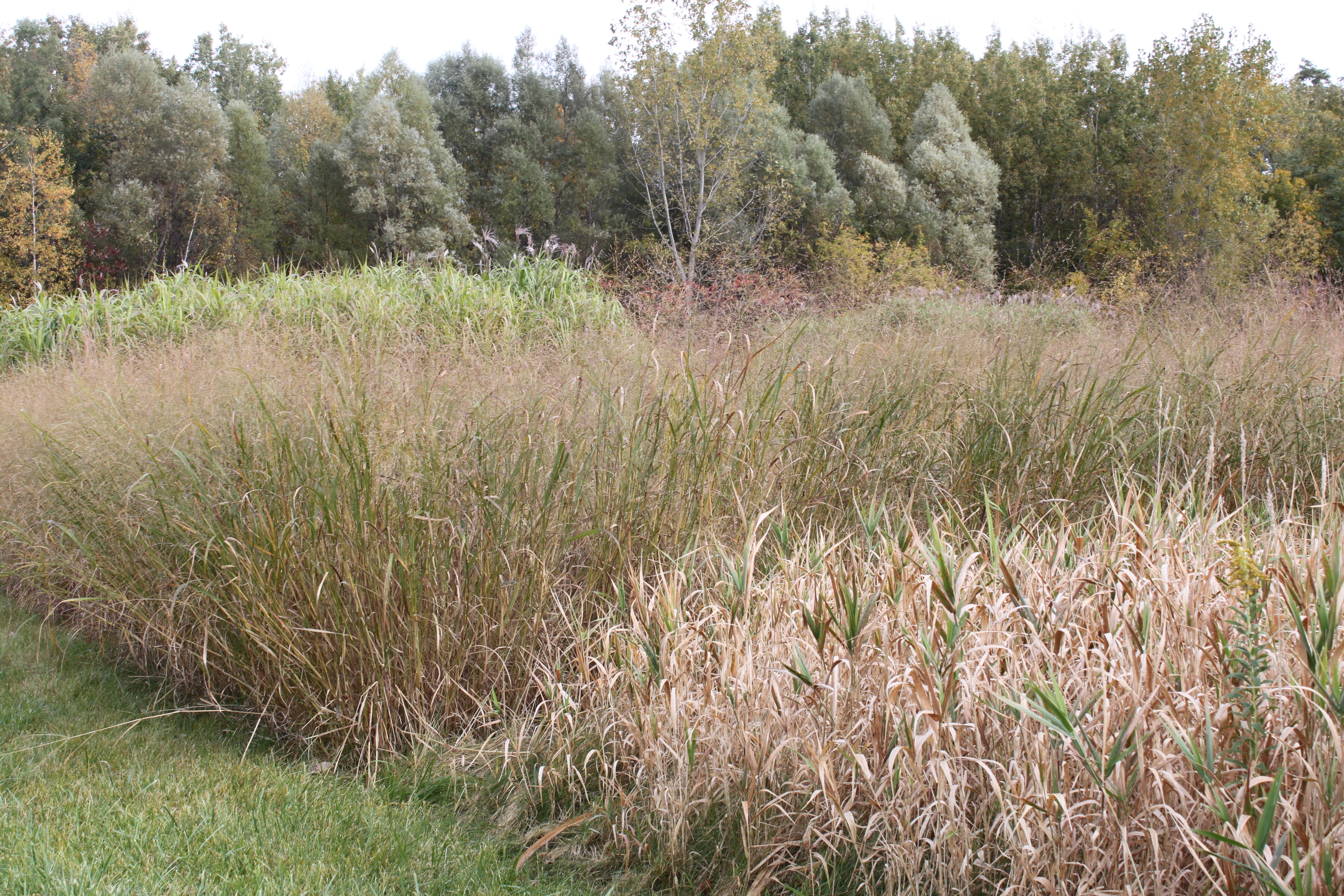
Grass for biofuels grow at the UVM Hort Farm in South Burlingon, Vermont. Photo credit Vermont Bioenergy Initiative
Grass Energy in Vermont and the Northeast includes key recommendations on models of grass energy that will work best for Vermont. Regional and closed loop processing were two models recommended, both involving farmers growing and harvesting grass, but differing in where the grass is processed into fuel and where it is used. The regional processing model calls for aggregating grass from a 50-mile radius at a central processing facility, where the grass is made into and used as fuel, or sold to local users. The closed loop model suggests farmers growing and processing grass on-site for on-farm or community use. Other models, like mobile on-farm processing and processing fuel for the consumer pellet market have significant hurdles to overcome if they are to be successful in Vermont.
Despite hurdles in some of the models presented, the report points to grass energy being a good option overall. “Native, warm-season grasses grown as a heating fuel are a viable energy crop for Vermont farmers wishing to diversify. Once the grasses are well-established, the input costs are minimal—especially compared to corn,” states Alexander DePillis, senior agriculture development coordinator for Vermont’s Agency of Agriculture, Food and Markets, an instrumental partner throughout planning for and publishing the grass energy report. “Grass thermal energy has the potential to help cut Vermont’s overall fuel bills while helping us meet the overall goal of the Comprehensive Energy Plan—for Vermont to obtain 90% of its energy from renewable sources by 2050.”
Perennial grasses can be grown on marginal lands not well suited for continuous row crop production and in open rural land currently not in agricultural production. The grass energy benefits reviewed in the report include retaining energy dollars in the local community, reducing greenhouse gas emissions from heating systems, improving energy security, providing a use for marginal farmland, and reducing pollution in soil and run-off from farms. Recommendations include a concerted effort in Vermont to plant grasses for energy on extended buffer strips along Lake Champlain, thereby reducing its nutrient load. Grass is a perennial crop harvested annually that can help level the increasing demand for forest biomass, while adding water quality and wildlife benefits by controlling erosion, reducing fertilizer use and providing cover and food for migrating and nesting birds.
In 2008, the Vermont Bioenergy Initiative began to explore the potential for grasses grown in Vermont to meet a portion of the state’s heating demand and reduce the consumption of non-renewable fossil fuels. The Grass Energy in Vermont and the Northeast report was initiated by the Vermont Sustainable Jobs Fund to aid in strategic planning for future grass energy program directives. The Vermont Bioenergy Initiative and subsequent grass energy report are funded by appropriations from the US Department of Energy secured by the Office of Senator Patrick Leahy.
The Vermont Bioenergy Initiative (www.vermontbioenergy.com) draws the connection between diversified agriculture and local renewable energy production for on-farm and community use. Aiming to supply farm inputs and reduce fossil fuel consumption, this program supports research, technical assistance, and infrastructure development in emerging areas of bioenergy. Since 2003 the program has focused on biodiesel production and distribution for heating and transportation, oil crops for on-farm biodiesel and feed, grass for heating, and algae production for biofuels and wastewater management. The Vermont Bioenergy Initiative is a program of The Vermont Sustainable Jobs Fund, a non-profit organization which provides financing, technical assistance and other resources to Vermont businesses who develop products and services and create jobs in the fields of renewable energy, and sustainable agriculture and forestry.




